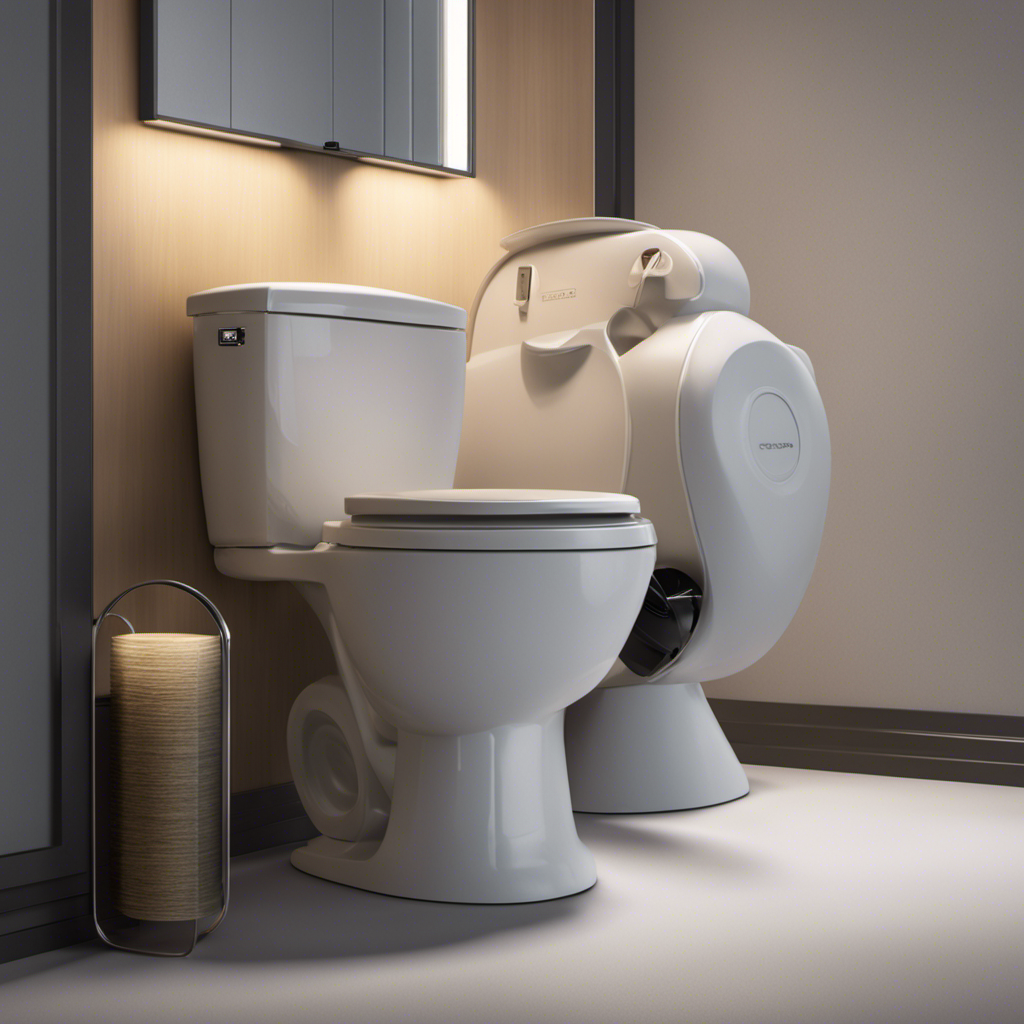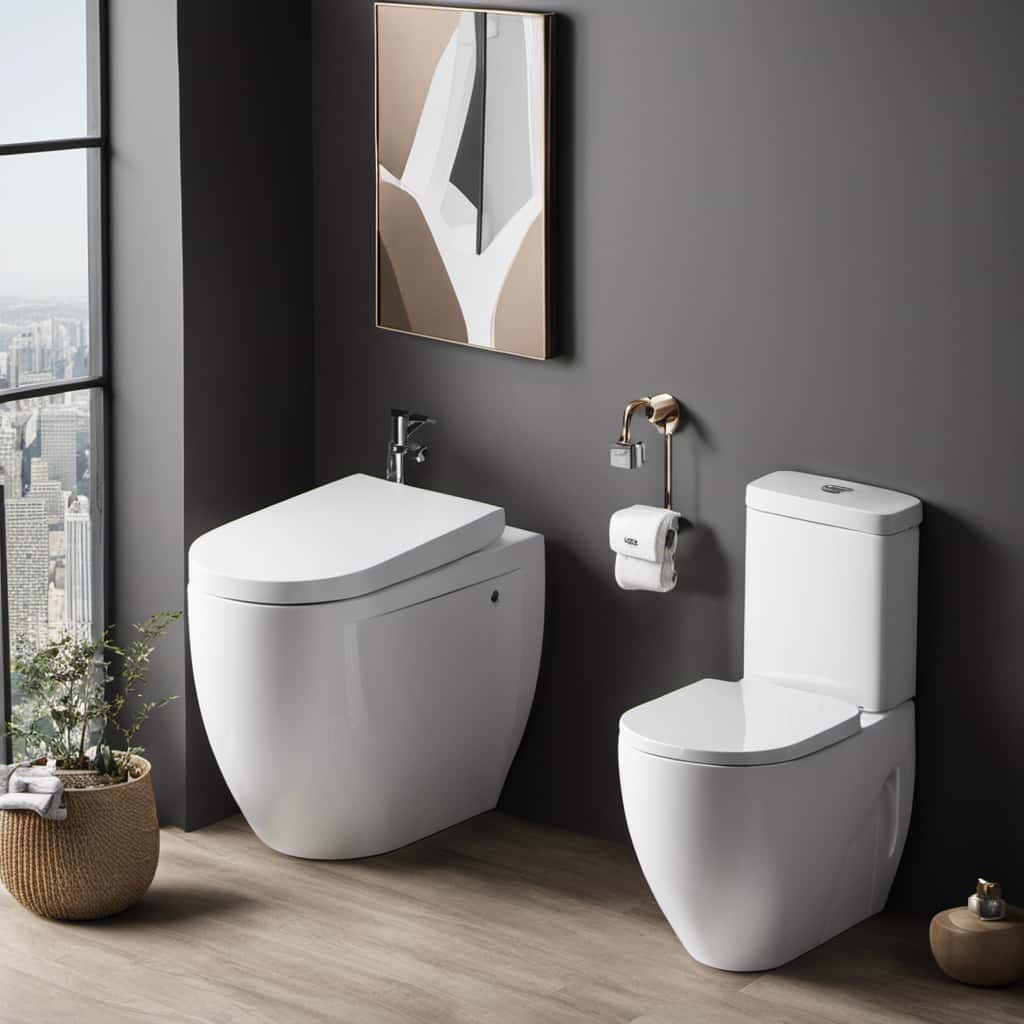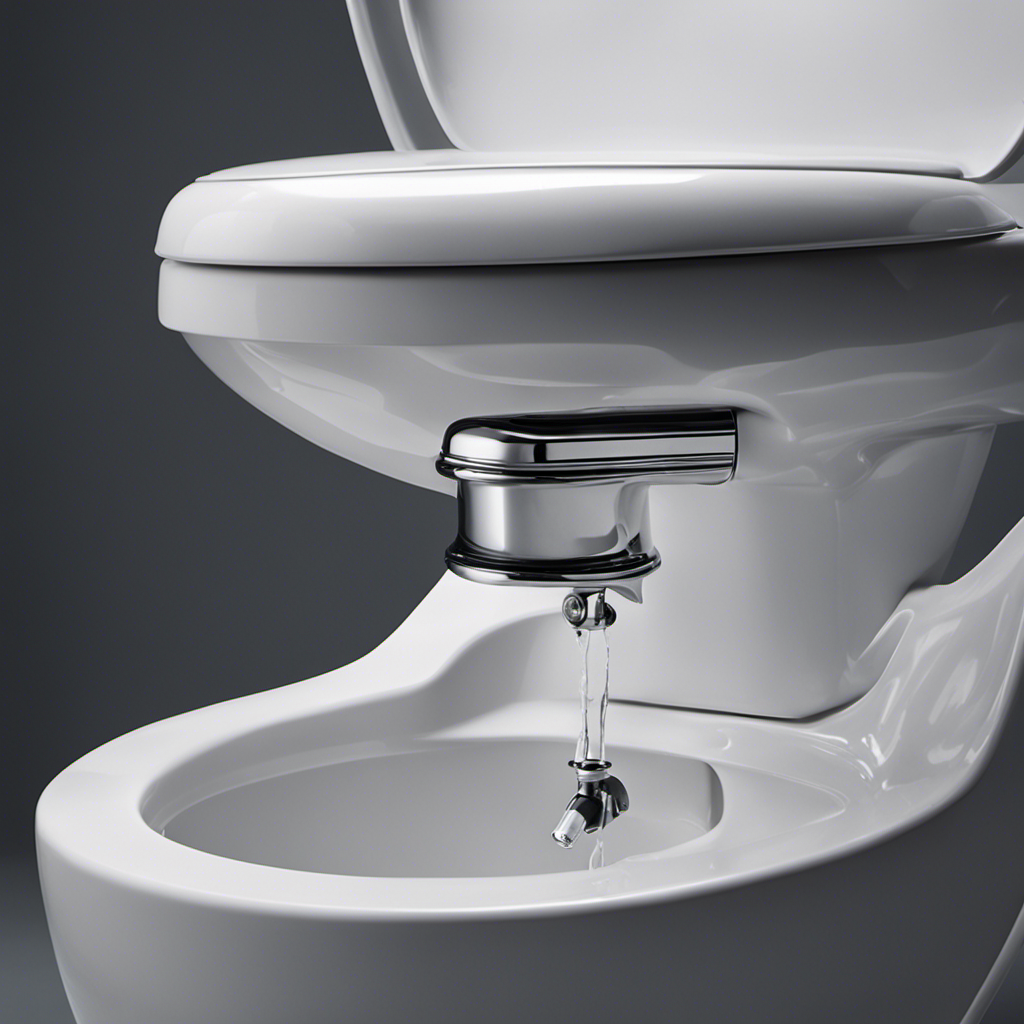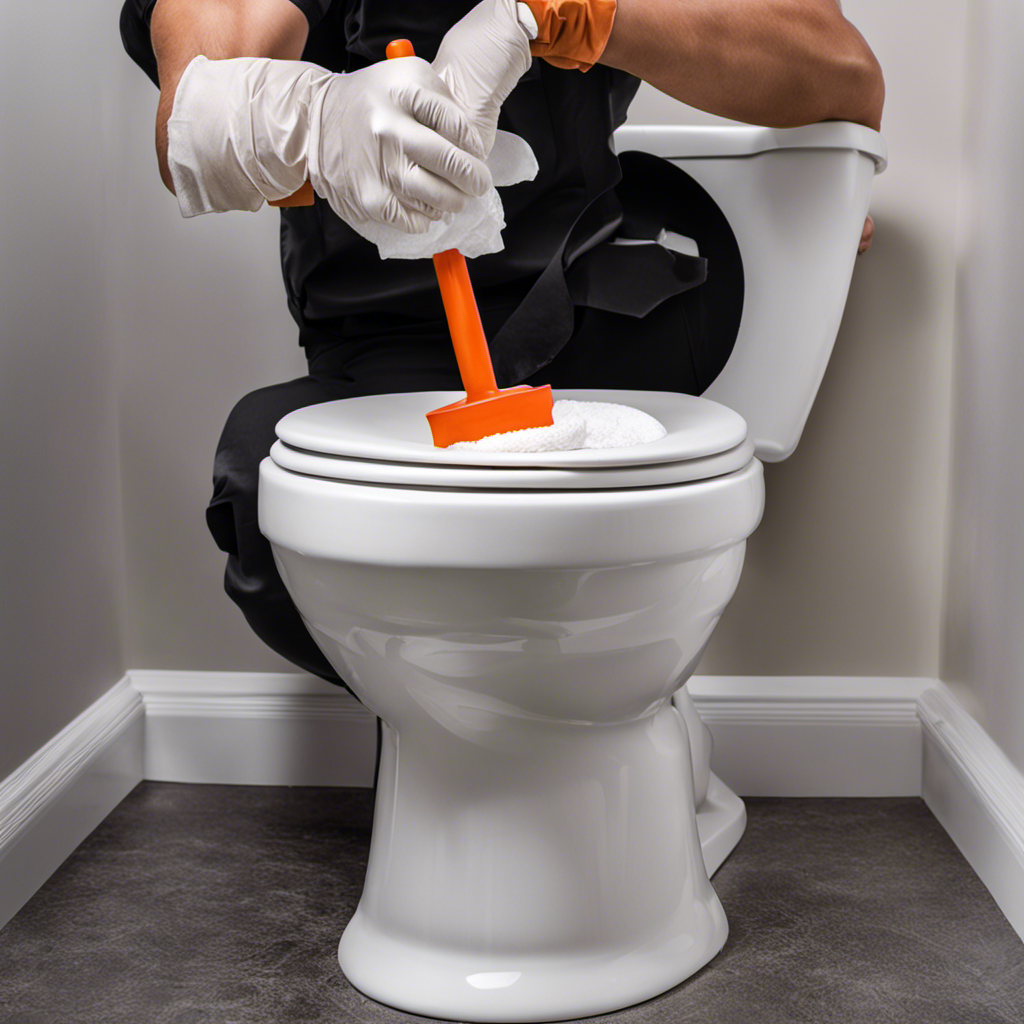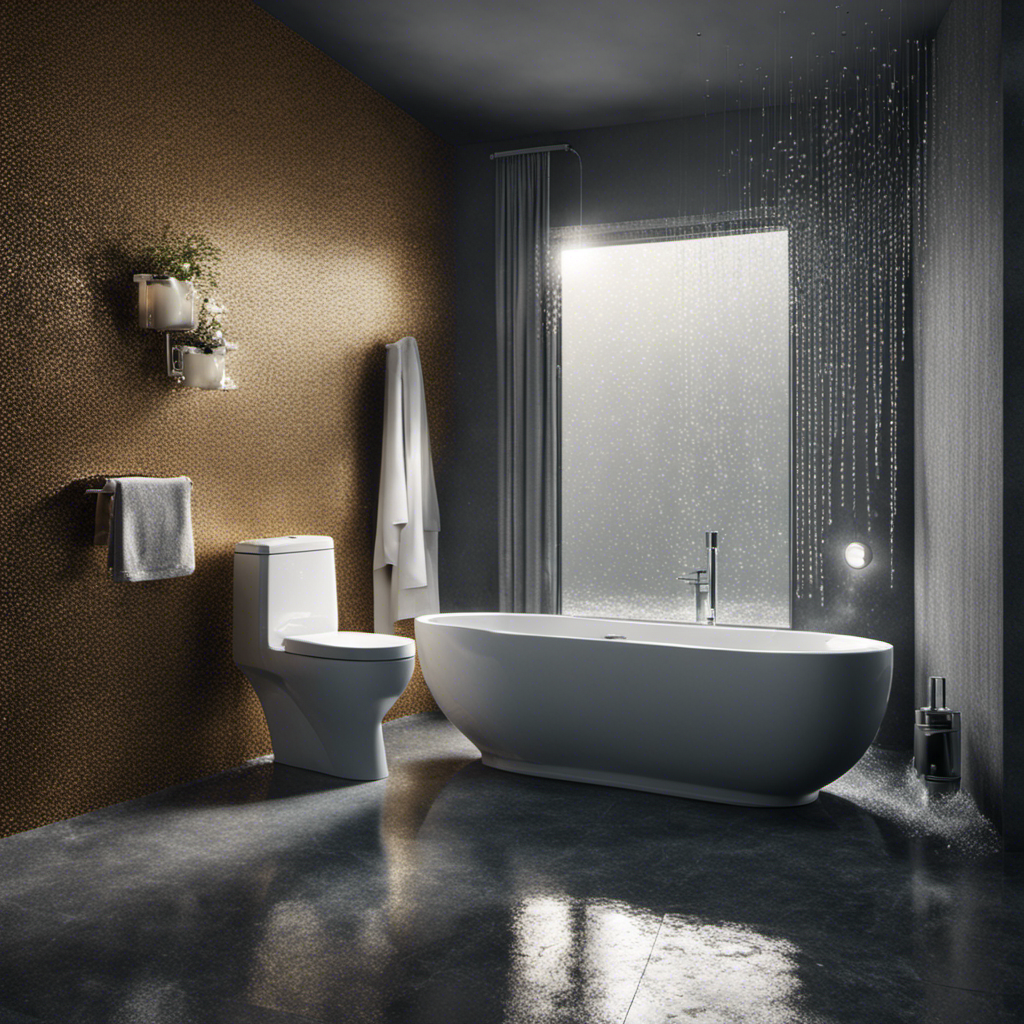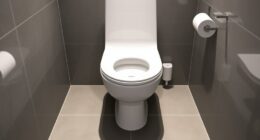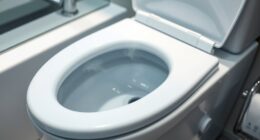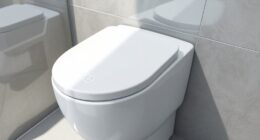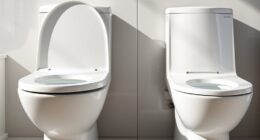As a homeowner, I know how frustrating it can be to have a loud flushing toilet disrupt the peace and quiet of your bathroom. But fear not! In this article, I will guide you through the step-by-step process of quieting your toilet and restoring tranquility to your space.
By understanding the causes of the noise and utilizing the right tools, you’ll be able to make adjustments and replace faulty parts to achieve a peaceful bathroom experience.
Let’s dive in and silence that noisy flush once and for all.
Key Takeaways
- Faulty flush valve and fill valve can cause a loud flushing toilet.
- Adjusting the water supply can help reduce the noise of the flush.
- Inspecting and replacing faulty toilet parts like the fill valve, flush handle, and flapper can contribute to noise reduction.
- Incorporating soundproofing techniques and creating a calm atmosphere in the bathroom can enhance the peacefulness of the experience.
Understanding the Causes of a Loud Flushing Toilet
To understand why your toilet is making such a racket when it flushes, you’ll need to know the common causes of a loud flushing toilet.
One of the most common toilet problems that can cause noise during flushing is a faulty flush valve. This valve controls the water flow from the tank into the bowl and if it is damaged or worn out, it can cause water to rush through, creating a loud noise.
Another possible cause is a loose or worn-out fill valve. This valve controls the water level in the tank and if it is not functioning properly, it can lead to noisy flushes.
Additionally, a clogged or partially blocked drain can also cause loud flushing noises.
Choosing the Right Tools for Quiet Toilet Maintenance
When fixing your noisy bathroom fixture, you’ll need the right tools to ensure a quieter flush. Finding alternative solutions and avoiding common mistakes can save you time and money. Here are some essential tools you’ll need for quiet toilet maintenance:
| Tools | Function | Common Mistakes to Avoid |
|---|---|---|
| Adjustable wrench | Used for tightening or loosening bolts and nuts | Not using the correct size wrench can strip the bolts |
| Screwdriver | Necessary for removing screws and accessing different parts of the toilet | Using the wrong type of screwdriver can damage the screws |
| Plunger | Helps in unclogging the toilet and ensuring proper water flow | Not using the plunger correctly can worsen the clog |
Step-by-Step Guide to Adjusting Water Supply for a Quieter Flush
First, make sure you have the necessary tools ready for adjusting the water supply to achieve a quieter flush.
To begin, locate the water supply valve, usually found on the wall behind the toilet. Turn it clockwise to reduce the water pressure and counterclockwise to increase it. Start with small adjustments and test the flush each time until you find the desired noise level.
If adjusting the water pressure does not solve the problem, there may be other issues causing the noise. Troubleshoot common toilet noises such as a faulty fill valve, flapper, or loose pipes.
Inspecting and replacing faulty toilet parts for noise reduction will be discussed in the next section.
Inspecting and Replacing Faulty Toilet Parts for Noise Reduction
If you notice any unusual noises coming from your bathroom, it’s important to inspect and replace any faulty toilet parts to reduce the noise. Here are three common toilet problems that can cause loud flushing noises:
-
Malfunctioning Fill Valve: The fill valve is responsible for refilling the tank after each flush. If it is not working properly, it may cause a loud noise. Inspect the fill valve for any leaks or damage, and replace it if necessary.
-
Loose Flush Handle: A loose flush handle can cause vibrations and noise during flushing. Tighten the handle or replace it if it’s damaged to eliminate the noise.
-
Worn-Out Flapper: The flapper is the rubber seal that controls the water flow from the tank to the bowl. If it is worn out or damaged, it can cause a loud noise. Replace the flapper to restore a quiet flush.
By addressing these common toilet problems, you can reduce the noise levels in your bathroom and enjoy a more peaceful experience.
Now, let’s move on to additional tips and tricks for a peaceful bathroom experience.
Additional Tips and Tricks for a Peaceful Bathroom Experience
Now, let’s explore some additional tips and tricks to create a more peaceful bathroom experience.
To enhance the ambiance and create a calm atmosphere, consider incorporating elements that promote relaxation. Install soft lighting fixtures with warm-toned bulbs to create a soothing glow. Add plants or natural elements such as bamboo or pebbles to bring a sense of tranquility.
To further reduce noise and create a quieter toilet environment, soundproofing techniques can be employed. Install acoustic panels on the walls or use soundproof curtains to absorb and block out unwanted noise. Additionally, consider adding a door sweep or weatherstripping to seal any gaps and minimize sound leakage.
Frequently Asked Questions
How Often Should I Perform Maintenance on My Toilet to Keep It Quiet?
Toilet maintenance frequency is crucial for keeping it quiet. Regular check-ups and cleaning can prevent noise issues. Additionally, there are tips for reducing toilet noise without using lubricants, which I can provide.
Are There Any Specific Brands of Toilets That Are Known for Being Quieter Than Others?
There are several toilet brands known for their quiet flushing capabilities. These brands prioritize noise reduction in their designs, resulting in a more peaceful bathroom experience. Some of the best toilet brands for noise reduction include [insert brand names].
Can I Use Any Type of Lubricant on the Toilet Parts to Reduce Noise?
Yes, you can use toilet lubricant to reduce noise. However, there are alternative solutions as well. It is important to choose a lubricant that is safe for use on toilet parts to avoid any damage.
What Should I Do if Adjusting the Water Supply Doesn’t Make My Toilet Quieter?
If adjusting the water supply doesn’t quiet my toilet, I would suggest exploring soundproofing techniques. Consider using a muffler or insulating materials to reduce noise.
Are There Any Natural Remedies or DIY Solutions to Reduce Toilet Noise?
Toilet noise reduction can be achieved through natural remedies or DIY solutions. Soundproofing the bathroom can also help. I’ll explain the different options and techniques to minimize the noise and create a more peaceful environment.
Conclusion
After following the step-by-step guide and using the right tools, my loud flushing toilet is now a thing of the past.
The rhythmic flow of the water has been restored, creating a peaceful bathroom experience like never before.
No more disruptive noises, just a quiet and efficient flush that blends seamlessly with the tranquility of the space.
With a few adjustments and replacements, my toilet has been transformed into a serene oasis, where peace and quiet reign supreme.
